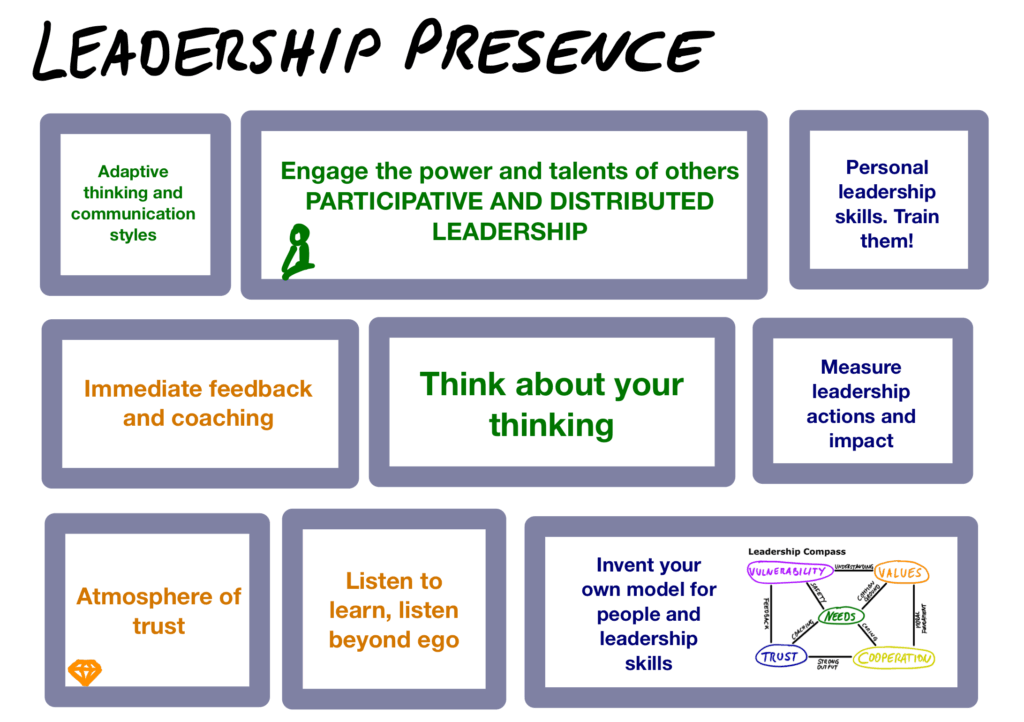Leaders often wrestle with what it means to have presence. Many assume that leadership presence requires commanding body language, carefully polished messages, and a display of expertise. The unintended result is often a performance, something that feels inauthentic and leaves others disengaged.
True leadership presence is not about performance; it’s about authenticity, trust, and connection. It’s about showing up as yourself and allowing others to feel safe, inspired, and curious in your presence.

Core Principles
1. Show up as a whole person
Bring your full humanity into the room. Leadership presence is not about hiding imperfections; it’s about integrating them into your leadership style. People connect more deeply with leaders who are real rather than flawless.
2. Lead with what you care about
Your values, passions, and priorities are the strongest anchors for presence. When people know what truly matters to you, they are more likely to trust and follow.
3. Begin a conversation that others want to continue
Presence is about creating dialogue, not monologue. Invite curiosity, ask questions, and spark interest so people lean in and want to engage further.
4. Cultivate sustainable curiosity
Stay open about others, about yourself, and about work. Curiosity fuels connection, learning, and creativity.
5. Start by standing still
Leadership presence begins with staying grounded. Before you act or speak, center yourself physically, mentally, and emotionally. From stillness comes clarity.
6. Find the story in everything
Stories humanize leaders. Whether sharing a challenge, a success, or a lesson learned, stories make your presence memorable and meaningful.
7. Investigate your impact
Your intent may be positive, but what matters is how others experience you. Ask for feedback, observe reactions, and refine your presence accordingly.
8. Build your “muscle memory”
Presence isn’t developed overnight; it’s practice. The more you intentionally show up in alignment with these principles, the more natural it becomes.
9. Let go of control and lean into influence
Leadership is less about controlling outcomes and more about influencing through trust, clarity, and vision. Presence is about guiding, not dominating.
A Guiding Insight
As Agnes de Mille once said:
“There is vitality, a life force, an energy, a quickening that is translated through you in action, and because there is only one of you in all of time, this expression is unique. And if you block it, it will never exist through any other medium and it will be lost. The world will not have it. It is not your business to determine how good it is nor how valuable it compares with other expressions. It is your business to keep it yours clearly and directly, to keep the channel open.”
This reminds us that presence is not about comparison; it is about clarity, authenticity, and channeling your unique essence into your leadership.
Reflection Prompts
• How am I currently showing up as a leader? Am I performing or being authentic?
• What do I care about most deeply, and how do others know this about me?
• What stories from my own experience could make me more relatable as a leader?
• When was the last time I asked someone about the impact of my presence?



